Tundra: cold life

Distribution and environment
The tundra extends in areas where the summers of the trees are too cold and short. To the north of the boreal forests, above the latitude of 65°, in the northern areas of Alaska, Canada, Scandinavia, Russia and Siberia we have the Tunartic; moreover, dispersed by the high mountains of the world, are the Alpine tundra, and in the Southern Hemisphere we have small tundra on the banks of Antarctica, Tierra del Fuego, and some ice creams.

With such a wide extension, the climate changes quite a bit from place to place. The closer the sea is, the greater humidity and temperate temperatures are, and at a lower latitude, the lower winters. Thus, the tundra of the Southern Hemisphere usually has quite comfortable conditions throughout the year, while the harshest ones are given in the rocky desert of the Northern Archipelago of Canada. The average temperature throughout the year is usually around -5 °C in most tundra, without heat, since in the warmer month the temperature barely exceeds 10 °C. In winter it can be intense cold, often less than -30ºC.
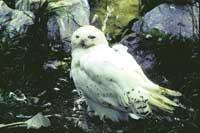
In these cold conditions the humidity of the atmosphere is low and the rainfall is low, less than 250 mm. But we should not deduce that it is dry. Except in the more arid areas, the snow fall in winter melts by hitting the spring, filling the floor completely with puddles. In addition, the soil is nailed, since the weak summer sun hardly has the strength to melt the surface in a few centimeters: if you start drilling with a hoe, we immediately find a layer of spoons, sometimes very deep.
In this way, the frozen land cannot absorb all the water generated in spring and huge rafts, ponds and lakes are formed in the plains. In addition, when it is not hot, the soil is kept humid until the cold of autumn refills everything.
This layer of underground spoon, called permafrost, conditions the life in the Arctic tundra: the plants cannot expand their roots, the animals cannot nidify in depth and the tundra is completely stagnated. As if it were not enough, the soil on the permafrost (active layer), with the spoon and the blaze of each year, moves a lot and in the steep are created forms of slipping (solifluxio), which gradually descend with a vegetal cover, while the soil of the plains, watered a thousand times and cracked by spoons, appears divided into large polygons sometimes and in peaks of the meter.
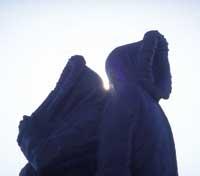
In the high mountain alpine tundra the conditions can be very different. The humid air that rises through the temperate plains causes numerous storms, so the snow accumulates sharply and the changes of temperature are sudden, since the winters are cold and the summers are hot. Therefore, permafrost hardly appears in the high mountains. The length of the winter changes with latitude. In the high mountains of the tropical regions the conditions are quite constant throughout the year; many times it has been said that every night comes the winter and every morning the summer, even though at night it thaw, the irradiation is very hard. While we go towards the poles, the duration of the day is increasingly variable throughout the year, and in the polar zones, the long month days alternate with the long month nights.
Types of tundra
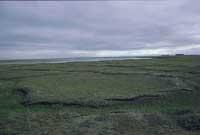
As mentioned above, no tree grows in the tundra, but it does reduce vegetation. According to this, three types of tundras can be distinguished in the Arctic: leguminous tundra, herbose and scrub. Unlike these three, but with significant differences, it is an alpine tundra.
The leguminous tundra dominates in the coldest and arid areas, such as the Ellesmere and Baffin Islands, or in the West Single Zones from the Hudson Bay. As its name indicates, gravels, gravels and rocks are most of the landscape, since they only grow rare plants: some mosses and lichens, or some plants with flowers. The soil is mineral, with very little organic matter. There are so few suitable plants, as well as animals, among which stand out those of carpeted ox, arctic hares, arctic foxes and white partridges.
The grassy tundra grows in more comfortable conditions, where the plants cover most of the land. This type of tundra occupies much of northern Alaska, most of Iceland, or several regions of Siberia. In addition to greater coverage, diversity and fertility are greater. The main vegetable communities are established according to the humidity and depth of the soil, completing the mosaic resulting from the topography: in the poor drainage plains predominate the carboneros, in the arid and stony areas dominates Dryasa and in other areas the lichen caribú (Cladonia) covers large extensions.

Cranberries, horse grapes or willows and dwarf ferrets can also be found. The soil usually has a lot of humus, and is usually quite acidic. Animal diversity is not terrible, but it is greater than the legous tundra. Numerous aquatic birds (swans, eider, kurlintas...) spend the summer in lakes and streams. Among mammals, caribus, lemingas and squirrels are the most common, but foxes, wolves and brown bears can also be seen.
In the shaded tundra predominate the bushes and bridges: urki, alder, ahabi, sauce, fir and others. The more comfortable the conditions are, the higher and more compact the bush and, below a latitude, the cold forests will dominate. As for animals, we can consider it as one of the herbaceous taigas and tundra: caribos are very common, but also the furniture, castors, variable hares and common foxes.
Finally, alpine tundra have an arctic tundra shape, but there are differences between them. The main difference is that the summer is longer and the most intense irradiations, but in addition we must highlight the absence of permafrost, which makes the soils more arid than those of the Arctic.
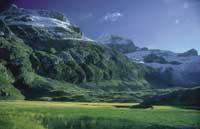
The most extensive areas of the alpine mountain range are formed by liquid coated rocks, but also small coals and bushes of blueberries, willows and rhododendrons.
Many of the plant genera also grow in the Arctic, but the diversity of species is usually higher in the high mountains. Among them are several piled plants and many other white hair covers. Among the animals is the specialized fauna of high mountain (rebecos, wild goats...), besides the species boreo-alpinas (white partridge, armiño...). Insects are much more fun than in the arctic tundra and you can see numerous finned species, which are due to the adaptation to the strong winds.
Production of production
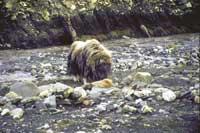
In one of the most hostile environments in the world, the discomfort of living beings of tundra are not negligible and cold limits production and biological cycles. For the plants, the moving soil, the irrigated and the bark, the burning of the rough wind, and the long winter is very difficult to overcome, which prevents the appearance of many species. The permafrost, in addition, cools the soil and inactivates the growth, dampens the microbial action, reduces the ventilation of the soil and prevents the decomposition of the organic matter.
For this reason, during the long summer days the production of plants is limited by the lack of nutrients and does not reach a tenth of our latitude. The time of growth lasts only between two and three months, plants need years to reproduce and asexual reproduction (much cheaper than sexual) is the most common.
The production is so low that the animals are also very scarce: the density of ungulates is 10,000 times lower than in the African savannah. Carnivorous densities are also very low and require larger living areas than anywhere else to detect sufficient catches.
Stations in the tundra
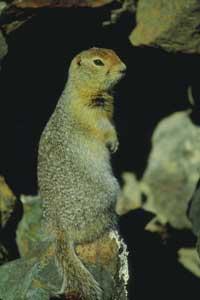
Despite the fact that the temperature does not have ups and downs as abrupt as in the taiga, in the tundra the seasons are more marked than in any other place; in winter, once exhausted the summer birds and caribos, and hibernated the squirrels, the medium seems desert. However, if we look at caution, signs of life can be detected, since most animals that spend the year in the tundra do not hibernate. Lemmines are protected under the snow from the attacks of the white shrubs and the snow vultures, and are able to reproduce in winter; the hares spend this tenor eating willow buds and the musculated oxen concentrate on the slopes washed by the wind.
At the end of the polar night, since the snow melts and at the beginning of June the arrival of the eider announces the spring, the aquatic birds colonize the new watered ponds. Little by little the tundra becomes green and full of flowers. Since the long day allows to eat almost uninterruptedly, birds can lay more eggs than anywhere else, and their offspring grow faster than anywhere else. But not everything is tranquility: when cold or wind does not calm, mosquitoes make the life of anyone suffer.
At the end of June, the impressive Calvary formations that have reached from the taiga to the tundra pastures cover the landscape. In August comes the colorful but short autumn: season of fruits and mushrooms. However, by September, the age of the swans alters the medium, like all the waterfowl, since when the water is spoilt, you have to flee from the lazy winter; the Caribbean also heads south, sheltered from the boreal forests. When the cold fronts arrive pushed by the strong winds of the Arctic, the snow horses scourge the whole tundra and everything is soon white and dry.
Dynamics of the tundra

Most of the tundra in the world are very young, since in a glaciation finished just 15,000 years ago they are covered by huge areas of ice. Since then, by melting the spoon, the sea rises and submerges many of these territories. However, the continents, once liberated from the load of the glaciers, gradually rose up, which re-emerged large extensions of land that would then colonize the vegetation of the tundra. Therefore, all this is a new process that is underway in many places. This is the case of Hudson Bay, where the land continues to rise, leaving hundreds of fossil beaches, increasingly far from the sea.
The dynamic of the tundra is strongly influenced by lemmines, small rodents that have given rise to many famous legends; most people have heard that the number of animals suffers ups and downs and that they carry out suicide migrations to avoid overpopulation. As often happens, there are many exaggerations in these stories. It is true that the populations of lemmines have violent fluctuations, being able to multiply by one hundred in a cycle of about four years before the following year practically disappears completely.

And sometimes large groups have been seen migrating, crossing rivers, lakes and narrow seas, but they have not committed suicide. What causes such a marked cycle? Although many scientists have tried to clarify this, the reason is still not clear. It does not seem to be due to time, since cycles of different places are not synchronized, nor does it seem to be the fault of predators, since the density of leming is too high for foxes and owls to control. The large populations of leming leave the pastizal completely pruned and most of the nutrient stays in the feces, so until its decomposition the plants are not recoverable. However, very similar cycles are given among the earth mice of our environment, and it is not clear whether they are related to vegetation.
Whatever the reason, the lemmine cycle affects the rest of the animals: the populations of Arctic fox, spinach and snow owls also suffer from violent ups and downs, as the prosperous years alternate with famines. Although in the years of leming the snow owls can draw 10 puppies, they do not even try to reproduce in the bad years, and most young people migrate. This means that every four years there are irruptions of snow owls very far from the Arctic (Scotland, for example).
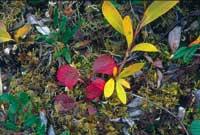
The aclareum of the vegetation has another costal effect: the soil is heated and sinks melting the lower permafrost. This is the origin of numerous lakes of the Arctic plains. Once formed a small lake, the waves caused by the wind erode the shores and the lake grows year after year, adding to other lakes and opening a new habitat. This process is not very fast, but enough to override maps in a few years. The thaw of permafrost should be taken into account when building any road or house, as they also sink due to the sun.
People in the tundra
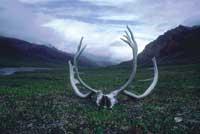
As mentioned above, tundra has always been the most unusual place in the world. And it is that, apart from a few villages like the Inuit, no one has developed a culture that can deal with such harsh living conditions. Most Inuit have also survived from the sea, affecting very little the tundra. The exception was the Caribu Inuitas of the Simple Zones of Canada.
All the life of this ethnic group was related to the migration of the caribos, and those who knew it affirm that they were the poorest people in the world; unlike the coastal Inuit, these could not get fat from the seals, so they had to spend the winter without fire. However, for Caribu Inuit, the diseases spread by white passers-by (especially the flu) were more malevolent than polar winter, completely disappearing in the middle of this century.
In recent years, the number of people living in the extreme north has increased; in addition to the ancient fur hunters, real cities have been created around wells or oil mines, with which pollution and cynegetic pressure are important in many places. The ecosystems of the Arctic are much more fragile than it seems, and these problems acquire great importance.
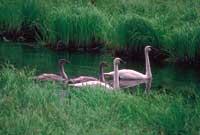
Wild animal populations can hardly recover from the influence of hunters, and as the slow cold decomposition, contaminants last much longer than in the temperate regions. In some places they have begun to realize the problem, but still little has been done to solve it.
In fact, nations with the widest tundras (Russia, Canada and the United States) have the eyes to the south, and, if not for mining, hardly pay attention to these hard areas. For reasons of military interest, the most extreme people in the north are tried to stay in the villages, but alcohol and lack of hope have caused great damage. We hope that the necessary measures are taken to avoid the degradation of a very cold and free living area and its conservation.
Peatlands Peatlands
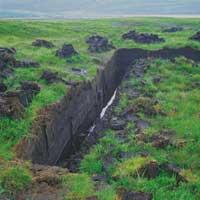
The facilities are formed in irrigated and cold soils. Because the diffusion of oxygen is slow, the humus is decomposed by fermentations, and the acids released in this process interrupt the bacterial activity, leaving the organic matter without rot. The main plant of these acid zones is the Sphagnum moss, whose remains form deep organic layers that will become winners with the passage of time. Despite the abundance of organic matter, the presence of nitrogen and phosphorus in the soil of the zoicists is very reduced due to the rapid loss of these elements in acidic pH. Therefore, carnivorous plants are common, since insects are the almost only sources of nitrogen in these poor areas.





